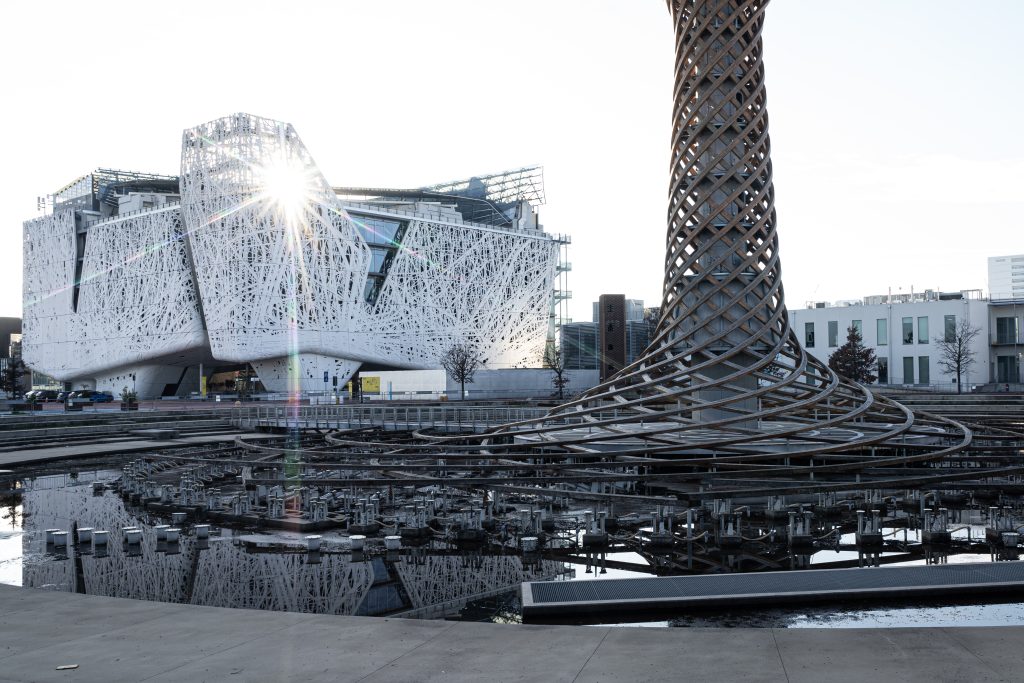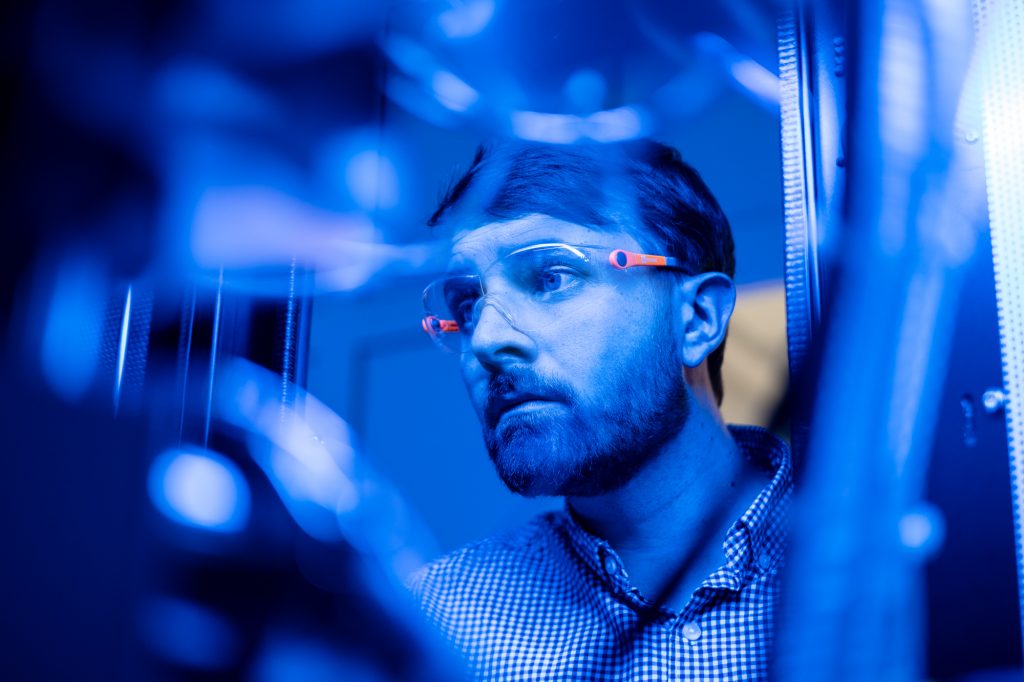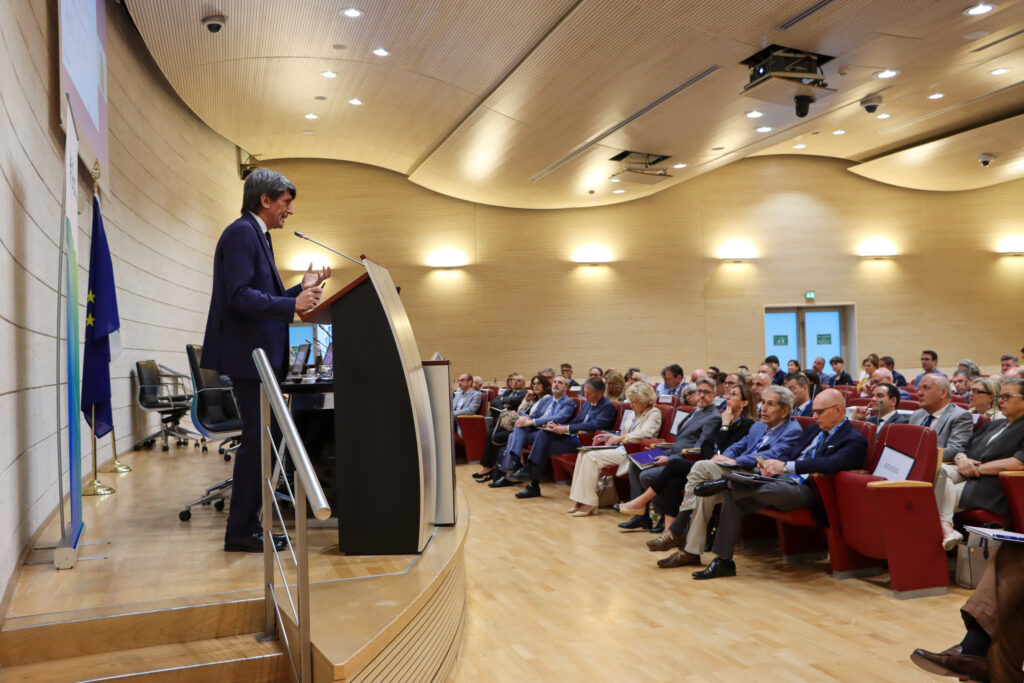The National Facility for Genome Engineering & Disease Modelling with Giovanni Fagà

Meet Giovanni Fagà, Head of the National Facility for Genome Engineering & Disease Modelling. The core mission of the National Facility for Genome Engineering and Disease Modelling is to provide access to cutting-edge technologies in pluripotent stem cells, cell model generation, and genomic engineering. Utilizing advanced laboratory automation, the NF team creates modular workflows for stem cell generation, genomic manipulation, and differentiation, improving speed and standardization in disease modelling. The system enables the generation of investigative tools for studying previously inaccessible diseases and it networks with major stem cell biology facilities in Europe and beyond to share expertise and harmonize protocols.
Giovanni, tell us about your background: what inspired you to pursue a career in life sciences research?
I think you would like to hear the story of a curious child, always busy experimenting and building amazing machines. This is not my case. As a kid, I was into computers and electronics. Biology came much later, when I decided that I needed to understand how living things work. We haven’t figured it out yet, so I’ll stop here for now.
Can you share a memorable or influential experience from your career that has had a lasting impact on your professional development? Are there any specific sources of inspiration or role models that have influenced your journey?
I can name two, among many. My biology teacher when I was 15. He enlightened me during a lecture on photosynthesis: I learned that RuBisCO was the king of all enzymes, we all sit on our comfy sofas thanks to the Calvin cycle.
A physiology lab at university: the professor showed us how to electrically stimulate a frog’s nerve and then asked: “What distinguishes man from animal?” We all tried to answer, for weeks, without getting the answer right. Eventually he told us: ‘History’.
I fell madly in love with science.
Can you describe a time when you faced a significant challenge or setback in your career, and how you overcame it? What did you learn from that experience?
I am not a successful scientist; I am someone who fails with success. And I have failed many times, learning the most important lesson: it is never over, it is not your only chance. I became what I am because I learnt how to get back up.
What does the NF for Genome Engineering and Disease Modelling do in HT? Could you briefly explain the objectives and goals of your work?
The Facility plays a pivotal role in a dynamic landscape, aiming to establish a cutting-edge disease modeling platform through a multidisciplinary framework. The services include the generation of pluripotent stem cells from patient samples, their engineering, and the subsequent development of three-dimensional models—organoids. This approach allows us to delve deep into the nuances of diseases that were once beyond our reach. What sets us apart is our commitment to leveraging state-of-the-art robotic platforms. By doing so, we are not merely automating manual processes but elevating them to efficient, high-performance workflows.
Can you share some notable achievements or breakthroughs that the NF has already made?
The most important achievement was to build and operate, from scratch, a facility capable of delivering a complex portfolio of services whose execution requires highly specialised personnel and technologically sophisticated resources. The generation, manipulation and genetic engineering of stem cells requires the implementation of very long protocols whose completion is subject to a plethora of experimental variables. We have succeeded in our goal of standardising these protocols and making them usable for the scientific community.
Can you share any upcoming projects or initiatives that the NF is planning to undertake?
We are constantly evolving. The next 18 months will be dedicated to translating stem cell management and a selection of organoid generation protocol into highly automated flows. In addition, we are preparing a series of courses and workshops for teaching the basic techniques of stem cell culture and gene editing.
How does your research contribute to advancements for human life and technology?
We are currently witnessing a significant shift in scientific knowledge, driven by the remarkable technological advancements of the past two decades. Our overarching goal is to democratize access to these technologies, ensuring they are available to a broad spectrum of users. The utilization of stem cells and organoids derived from patients has opened up avenues for the investigation of pathologies that were previously deemed inaccessible. Conditions such as neurodevelopmental diseases, cardiometabolic diseases, and rare genetic disorders are no longer confined to the limitations of the animal model. While animal models have made substantial contributions, they have also demonstrated considerable constraints. Today, we have the capability to delve into the in vitro study of the development of the nervous system or the modeling of a heart, pushing the boundaries of what was once thought possible in scientific exploration.
How do you foster collaboration and encourage interdisciplinary research within the NF and with Groups?
In scientific institutes, collaboration should germinate spontaneously. I constantly receive requests for collaboration and every day, together with the other NF managers, we build a common path to integrate our expertise. Science cannot be done alone.
What are the main challenges you face leading a NF, and how do you overcome them?
The National Facilities are at their debut. The ambition to create a research infrastructure that can provide services and support to a large community of scientists, an entire nation, is exciting, but it comes with immense organisational work, riddled with obstacles and blind alleys. I am supported by my team, an incredible group of scientists, and the people who work hard every day at Human Technopole. Only together can we create something unique.
How do you maintain a work-life balance while leading a NF? Are there any strategies you find helpful in managing your time effectively?
I found a balance after many years. My recipe is to always have time to devote to my family, and myself, even if it means sacrificing part of my daily schedule. Every day at work, I try to be the best person I can be. To do that, there has to be a whole life of other things underneath me.
What are some emerging trends or technologies in your research field that you find particularly exciting or promising for future research?
Our Facility deals with stem cells, organoids, gene editing and automation. How many hours do you have? OK, let me put it this way: in the next ten years (more or less?), gene editing technologies will complete the transition from laboratory tool to established therapeutic approach. It will be a revolution, and we still don’t know exactly how it will happen. We will generate increasingly complex organoids, but the great revolution will be the possibility of modelling diseases on sophisticated, reproducible, and miniaturized multi-organ systems. The evolution of what we call organ-on-chip today.
What advice would you give to young researchers who aspire to become leaders in the field of life sciences?
Learn to fail.
What do you think you would be if you were not a scientist?
A writer of crime or fantasy novels.



